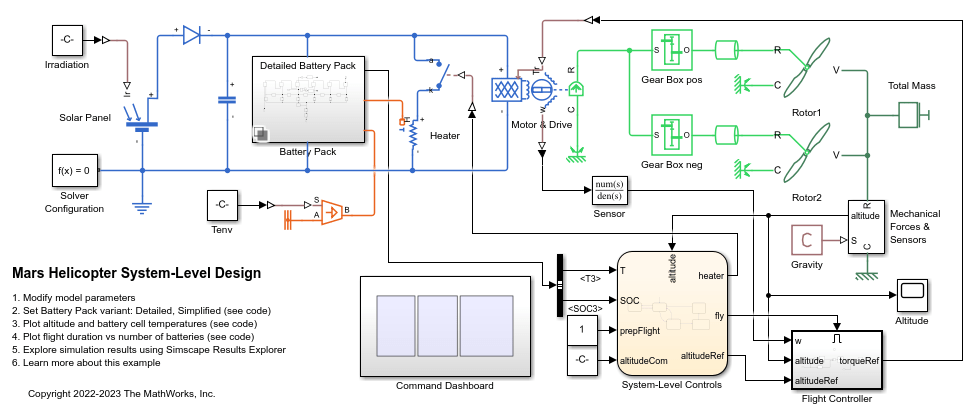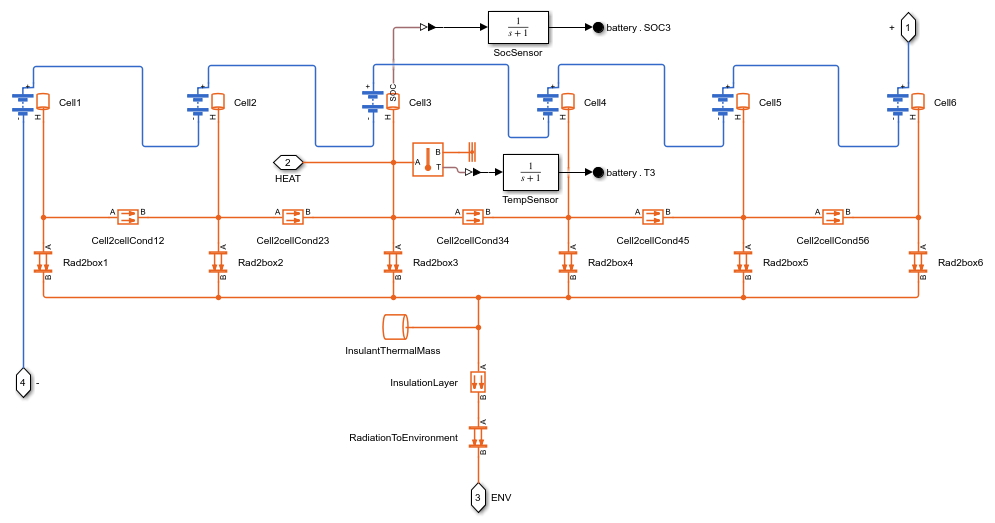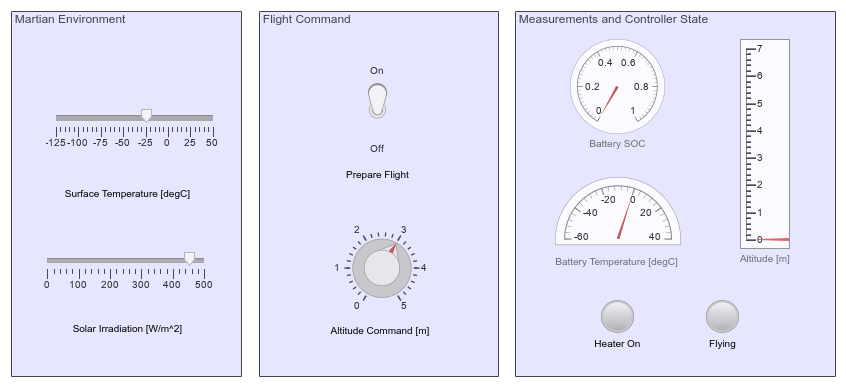Mars Helicopter System-Level Design
This example shows how to use Simscape™ Electrical™ to model a helicopter with coaxial rotors suitable to fly on Mars. This helicopter takes inspiration from Ingenuity, the robotic helicopter developed by NASA, which accomplished the first powered flight on another planet.
To control the helicopter altitude interactively, use the blocks in the Command Dashboard subsystem.
Model Overview
The helicopter model comprises a Solar Panel, a Battery Pack, a Heater, a Motor & Drive, two gearboxes and two contra-rotating coaxial rotors, as well as a 1D mechanical model of the gravity, drag, mass, and ground contact forces.

The battery pack contains six Lithium-Ion cells connected in series. Only the central cell is instrumented. The Heater is attached to the central cell. The cells transfer heat to each other and to the insulating box, which dissipates heat to the martian environment.

To correctly size the battery pack, you should consider the nominal voltage of the motor drive and the required nominal power, the nominal flight duration, the payload weight, and the battery energy to weight ratio. Additionally, the solar panel size and the average sun irradiation, together with the heat required to sustain the minimum temperature during the cold martian nights, determine the minimum and maximum energy that you can store during each daily cycle.
Command Dashboard
To control the helicopter interactively during the simulation, use the Sliders, Switches, and Knob blocks in the Command Dashboard subsystem.
As the model solves the equations much faster than real time, the system enables simulation pacing to slow down the animations to only 30 times faster than real time.

Control System Overview
The helicopter needs to survive the cold martian nights, that can reach temperatures as low as -125 degC. The electronics and batteries cannot operate at such temperatures, so a heater keeps the temperatures in an acceptable range.
The rotors consume high amounts of power during flight, and the batteries can only provide such power above certain temperatures. The heater must be used to reach such temperatures before taking off.

Once the helicopter is ready to take off, the Flight Controller subsystem is enabled to control the altitude. It comprises three PIDs that control the rotor speed, the climb rate, and the altitude, respectively. The output is the reference torque for the Motor & Drive block.

Plot Altitude and Battery Cell Temperatures

Plot Flight Duration Against Number of Battery Cells
The total number of batteries directly influences the maximum possible duration of the flight. You can add additional batteries to provide more energy storage, but this also increases the weight of the vehicle. Eventually, the motor is unable to provide enough power to lift the extra weight.

See Also
Motor & Drive (System Level) | Solar Cell